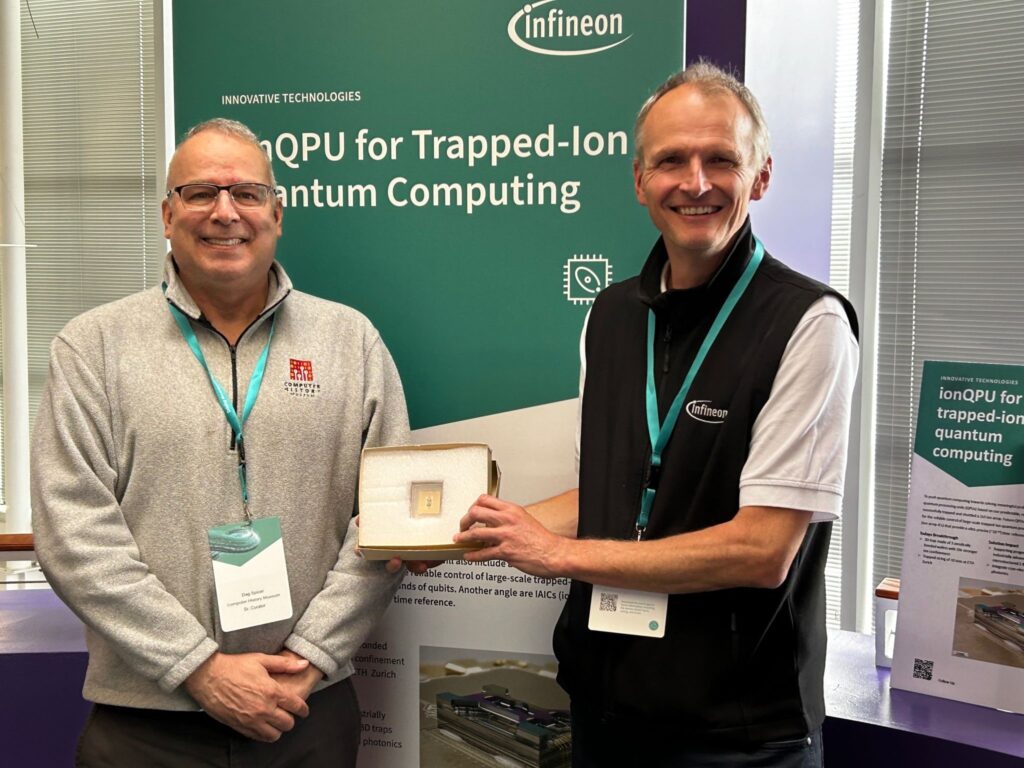
Though still experimental, quantum computing is one of the most exciting technologies on the horizon today.
A prototype of a quantum processor was donated to CHM during Infineon’s OktoberTech customer event at the Museum. OktoberTech is an annual fun day-long event of customer success stories, set up a bit like a Science Fair, showcasing advances across Infineon’s product portfolio, from AI-powered stethoscopes and farm tractors to partner Cerebras’ 2.6 trillion transistor Wafer Scale Engine.

The author with Infineon System Architect Stephan Schächer and the donated quantum processor prototype.
To dive a bit deeper, ion trap quantum processors like this one are a type of quantum computing technology that uses individual ions as qubits (quantum bits) to perform quantum computations. Qubits, in quantum computing, can exist in multiple states simultaneously, which allows quantum computers to perform certain calculations much faster than classical computers.
In an ion trap quantum processor, ions are typically trapped using electromagnetic fields. Laser pulses are then used to manipulate the quantum states of these ions, enabling the execution of quantum algorithms.
This delicate ballet of physics and engineering is done at 4 degrees Kelvin (-454 degrees Fahrenheit), nearly at 0K (“Absolute zero”—the coldest temperature possible in the universe, and the point at which all molecular motion stops).
The development of a quantum computer is being pursued with great energy by a handful of institutions and companies, using a variety of approaches (eight at last count) that hold promise, including trapping ions. Each has its own set of advantages and challenges, but some of the main approaches include:
Superconducting Qubits
Trapped Ions
Topological Qubits
Quantum Dot Qubits
Photonic Quantum Computing
Adiabatic Quantum Computing
Nuclear Magnetic Resonance (NMR)
Silicon-based Quantum Computers
While quantum computing is an active area of research with few real-world applications to date, it does hold great promise for complex calculations in the future, for example in cryptography—sending and receiving secret codes—in which trillions of possibilities can be explored in fractions of the time it would take a conventional supercomputer.
Berkeley computer science professor Dave Patterson estimates the first working real-world example quantum computers in about 2030, but CHM is proactively collecting in this area now so that we can capture the early steps people will have taken on the road to quantum computing.
Generations to come will look at these first early steps into quantum computing the way people look at the mainframe computers (or original Sony PlayStations) of days gone by. What will they think of quantum computing and how it will have shaped their world? Because of donations like the Infineon ion-trapping quantum processor prototype, CHM will hold many of the answers.
Caring for the collection and accepting donations like Infineon's would not be possible without the generous support of people like you who care deeply about decoding technology. Please consider making a donation.